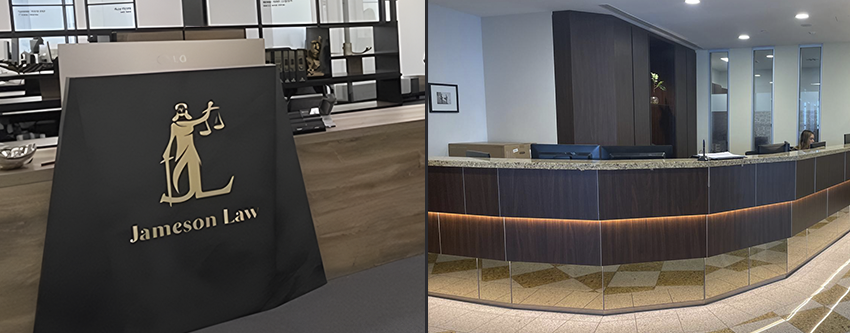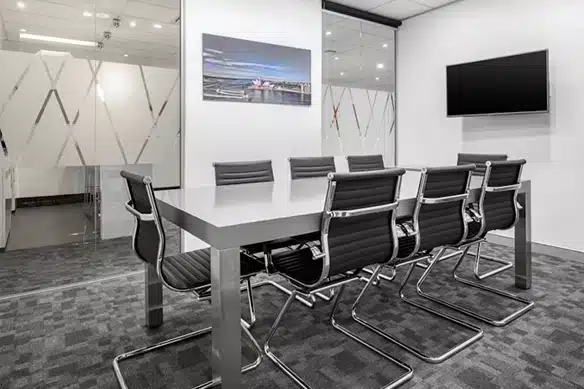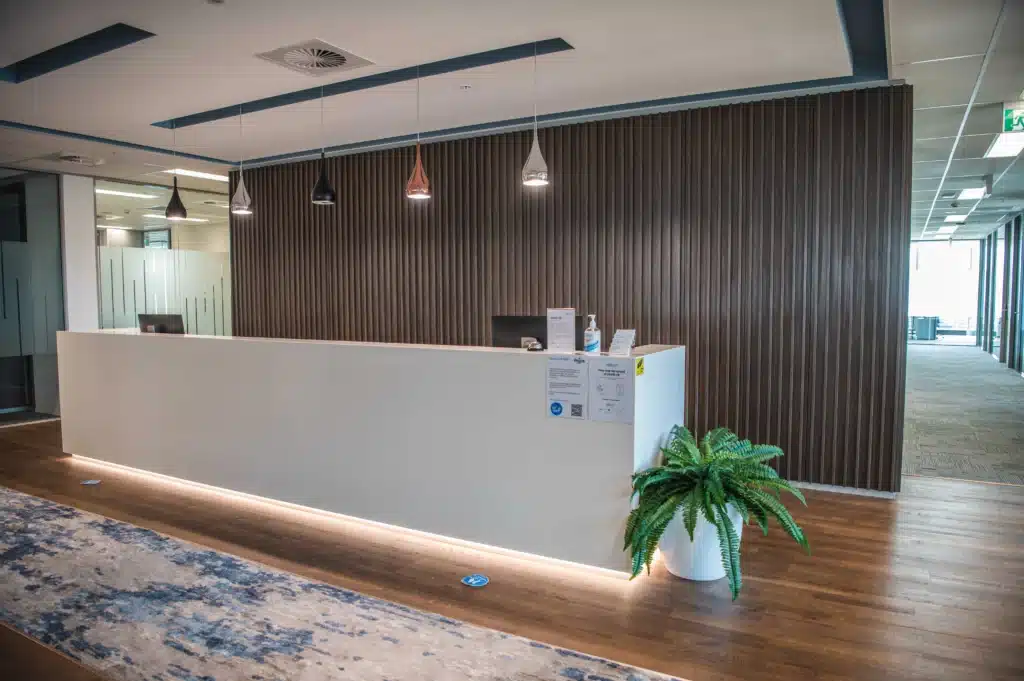A Slip and fall accident can be more than just a minor inconvenience; they can have lasting repercussions on your health and well-being. From fractures and sprains to severe head injuries, the spectrum of potential harm is wide-ranging.
While some individuals may recover fully within weeks, others may face prolonged rehabilitation periods extending months or even years. In the most severe cases, the injuries sustained may leave permanent disabilities, altering the course of one’s life indefinitely.
When you find yourself injured due to a slip and fall incident, it’s crucial to understand your rights and entitlements under Australian law. Pursuing a slip and fall claim involves navigating a maze of legal procedures and requirements, which can often seem daunting without the right guidance.
At Jameson Law, our dedicated team is committed to demystifying this process for you, ensuring that you’re equipped with the knowledge and support needed to pursue your claim effectively.
Where can Slip and Fall Accidents Occur?
A Slip and fall accident leading to public liability claims can occur in various places across Australia. According to SafeWork Australia, These include:
- Supermarkets and shopping centres, where hazards like spilled liquids or poorly placed merchandise can lead to accidents.
- Public footpaths or car parks, where cracked pavement, potholes, or inadequate lighting increase the risk of trips and falls.
- Rental properties, where examples may include broken stairs, faulty handrails, or unmaintained pathways.
- Schools, daycare centres, or sports facilities, where slippery gym floors, playground equipment defects, or uneven playing surfaces pose dangers.
- Theme parks or entertainment venues, where malfunctioning rides, slippery walkways, or poorly secured attractions can result in slip and fall injuries.
Being aware of these potential hazards is crucial to preventing accidents. If you’ve been injured in any of these locations, seeking legal assistance can help you navigate the claims process and pursue the compensation you’re entitled to. Contact Jameson Law today if you are looking to file a public liability claim today.
Understanding What You Can Claim for
There are a variety of factors that you c
Seeking Damages After a Slip and Fall Incident:
- Medical Expenses: Compensation for all medical expenses, including hospital bills, doctor’s visits, medications, physical therapy, and rehabilitation costs.
- Lost Earnings: Damages for income lost due to inability to work during recovery, as well as future earnings impacted by long-term disability or reduced earning capacity.
- Pain and Suffering: Compensation for physical pain and emotional distress caused by the accident, including discomfort, inconvenience, anxiety, and mental anguish.
- Loss of Enjoyment of Life: Damages for diminished quality of life, including inability to participate in activities and hobbies due to injuries.
- Permanent Disability or Disfigurement: Compensation for long-term impact on life, such as loss of mobility, scarring, or disfigurement.
- Other Expenses: Reimbursement for out-of-pocket costs like transportation for medical appointments, home modifications, or assistance with daily activities.
Seeking damages in these categories allows for full
Establishing a Duty of Care
In Australia, the duty of care in slip and fall cases refers to the legal obligation that property owners or occupiers have to ensure the safety of visitors on their premises. This means taking reasonable steps to prevent foreseeable risks of harm. Establishing that someone or an organisation owed you a duty of care is the first step in filing a successful fall compensation claim.
For example, a supermarket must regularly inspect and maintain its floors to prevent hazards like spills or uneven surfaces. If they fail to do so and someone slips and falls, they may be held liable for breaching their duty of care. Similarly, landlords must maintain rental properties in a safe condition, including fixing broken stairs or uneven pathways.
Overall, the duty of care is about ensuring that premises are reasonably safe for those who enter them, whether they’re customers, tenants, or other visitors. Seek legal advice today from Jameson Law for your best chance of filing a successful public liability claim!
Maximum Slip and Fall Compensation Claims
The maximum payout that you are entitled to very much depends on the factors influencing your payout for a slip and fall claim depending on various aspects of your case. Firstly, the severity of your injuries plays a crucial role, as compensation typically includes pain and suffering, loss of amenities, and future medical expenses.
Secondly, financial losses, such as past and future earnings, superannuation payments, and out-of-pocket expenses, contribute to determining the compensation amount. Additionally, the need for ongoing care and assistance, both past and future, influences the payout.
Moreover, if negligence is established, you may also be entitled to interest on out-of-pocket expenses and lost income. Lastly, in some instances, eligibility for workers’ compensation benefits, covering lost wages and medical expenses, factors into the overall payout. Consulting with our experienced slip-and-fall lawyers can provide clarity on these factors and help you understand the potential compensation you may receive.
As such, payouts can vary depending on your specific situation. Maximum payouts have been in the millions for some cases but generally can range from $10,000 to $100,000. For an understanding of the potential compensation that you might receive for your specific case, contact Jameson Law today.
Speak to a lawyer today
If you’ve suffered a slip and fall injury, Jameson Law is here to help you navigate the complex legal process and secure the compensation you deserve. With our extensive experience in handling slip and fall cases, our dedicated team of legal experts will tirelessly advocate for your rights and best interests.
Don’t let the physical, emotional, and financial burdens of a slip and fall accident overwhelm you. By entrusting your case to Jameson Law, you can rest assured that you’ll receive personalized attention and expert guidance every step of the way. From gathering evidence to negotiating with insurance companies, we’ll work diligently to achieve the best possible outcome for you.
Contacting a great slip and fall lawyer, like those at Jameson Law, can make all the difference in ensuring that you get the fall compensation that you deserve. Remember, we are in it to win it!
Steps of a slip and fall claim
Filing a slip and fall claim can be a rather long process. Here we will break down the steps of a slip and fall claim and what you need to break down what you need to be aware of at every stage of the process.
1. Establishing Duty of Care
To initiate your claim, you must demonstrate that the responsible party owed you a duty of care and failed to uphold it. This means showing that they were responsible for ensuring your safety and neglected to take reasonable precautions to prevent the circumstances that led to your accident.
- Gathering Evidence
Collecting evidence is crucial for supporting your claim. This includes obtaining:
- An accident report detailing the incident.
- Photographs depicting the accident scene to highlight any hazardous conditions.
- Receipts or records of medical expenses resulting from your injuries.
- Witness reports or statements corroborating your account of the events.
- CCTV footage, if available, providing visual evidence of the accident.
- Cleaning records indicating negligence in premises maintenance.
- Thorough records documenting rehabilitation expenses incurred during your recovery process.
- Assessing Losses
You must establish the losses you incurred as a direct result of the accident. These may encompass:
- Loss of earnings stemming from an inability to work due to your injuries.
- Compensation for pain and suffering endured, both physically and emotionally.
- Consideration of any diminished quality of life resulting from your injuries.
- Decision to Pursue Legal Action
Ultimately, whether to pursue legal action hinges on various factors, including the severity of your injuries and their impact on your life. Seeking legal counsel can provide invaluable assistance in understanding your rights, evaluating the strength of your case, and determining the most appropriate course of action.
By diligently following these steps and presenting compelling evidence, you can effectively file a personal injury claim and seek the compensation rightfully owed to you for your losses.
In a nutshell…
In a nutshell, filing a slip and fall claim involves establishing that the responsible party breached their duty of care by neglecting to prevent the accident. Gathering evidence, assessing losses, and deciding whether to pursue legal action are subsequent steps crucial for seeking compensation for
Time Limit to File a Slip and Fall Claim
In Australia, public liability claims should be filed within three years from the date of the accident. This timeframe also applies if you realize later that you were injured. It’s essential to report the accident promptly, as delaying could make it harder to gather evidence needed for your claim.
Even if you’re unable to report the accident immediately due to injuries, it’s crucial to do so as soon as possible afterwards. The sooner the accident is reported, the better your chances of proving liability. If you’re unable to return to the accident location because of your injuries, consider asking someone to do so on your behalf.
In a nutshell…
Seeking medical attention and advice immediately after the injury in a public space is also vital. Court proceedings for a public liability claim must commence within three years of the injury occurring.
Case Study
In a notable slip and fall case, Jameson Law secured a large settlement of $620k for a client, Sarah, a small business owner. In June 2019, Sarah, who ran a boutique clothing store in a local shopping plaza in suburban Sydney, had an unfortunate fall injury.
During her routine inspection of the premises, Sarah noticed a significant water leak originating from the adjacent café. Despite efforts to notify the plaza management, no action was taken to address the issue promptly. Later that day, while assisting a customer an accident occurred. Sarah slipped on the accumulated water, resulting in severe injuries.
Sarah suffered from a fractured ankle, torn ligaments, and persistent back pain. She underwent extensive medical treatment, including surgery to repair the damage to her ankle. Additionally, Sarah faced significant financial losses due to her inability to operate her business during her recovery period.
Jameson Law, led by one of their experienced attorneys, conducted a thorough investigation into the incident. It was revealed that the plaza management had failed to implement adequate hazard identification measures or maintain a regular cleaning schedule for the common areas. Moreover, negligence on the part of the café staff exacerbated the situation. This meant that both were liable and Sarah had the rights to claim compensation against both entities.
With compelling evidence gathered by Jameson Law, Sarah’s claim for compensation was successful. The settlement amount not only covered her medical expenses and loss of income but also accounted for the pain and suffering she endured as a result of the accident. This case underscores the importance of holding negligent parties accountable and highlights Jameson Law’s commitment to advocating for their clients’ rights in slip and fall cases. Remember, Jameson Law are always in it to win it!
FAQs
What is the average slip and fall settlement in Australia?
In Australia, the average damages awarded for slips and falls ranges between $5,000 for minor damages and $500,000 for severe injuries. Typically, the value of a slipping settlement depends upon your injury severity and the value of your economic and noneconomic damages.
How long after a fall can you make a claim?
When an injury is suffered in a public space, medical attention and advice should be sought out immediately. Court proceedings for a public liability claim must commence within 3 years of the injury occurring.













